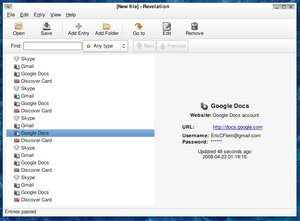Before we discuss, How to replace a Drum Brake Wheel Cylinder, here’s a little background.
All drum brake systems have some sort of device that spreads the brake shoes apart and engages the shoes against the inside of the drum.
On automobiles, the Wheel Cylinder performs this function. The wheel cylinder has two pistons that push out of each end, when hydraulic pressure is applied. These pistons force the shoes to pivot out wards against the drum. This force stops the drum from spinning and in turn, the wheel stops, when the brakes are applied.
A Wheel Cylinder can fail, over time, for various reasons, rust and or dirt can get inside, the rubber boots that seal the pistons inside the cylinder can wear and stretch with age and begin to leak. Sometimes when other types of break work have been done, the brake system has to be bled. The bleeder valve can become rusted and break when being removed. It is timelier to replace the wheel cylinder with a new valve, then to tap out and remove the broken valve.
Lets replace the wheel cylinder.
Raise the rear of the vehicle and support with jack stands. Make sure the front wheels are cocked and the emergency brake is engaged.
Always make sure the proper equipment when performing any type of mechanical work and test the vehicle to make sure it is securely supported.
Loosen and remove the lug nuts from the hub, remove the wheel and tire. Due to rust, the brass fitting that connects the brake line to the back of the cylinder can become frozen or stuck on the brake line. It is very important not to twist or snap the brake line. Spray the fitting and brake line with a good penetrating product and give it time to work.
Remove the brake drum. The brake drum can become stuck and may need a few sharp taps with a hammer to loosen and remove it from the hub. You may have to back off the brakes shoes by adjusting them away from the drum.
Some brake drums, especially on older vehicles, have the inner and outer bearings built into the drum and are held on to the spindle by a axle nut. To remove this type of drum, remove the cotter pin and the axle nut retainer, remove the axle nut, washer and outer bearing. You can now remove the drum. Keep the bearings and drum away from dirt and debris.
Now that the drum is removed the wheel cylinder can be removed. First remove the brake line from the cylinder. Use a brake line wrench or similar tool to loosen the brake line. The brake line fitting is bras, which is soft and can strip easily, take care not to strip the fitting. Remove the two bolts or clip, that holds the cylinder to the backing plate. Pry or push the upper brake shoes away from the cylinder where the shoe meets the pistons, and remove by pulling the cylinder away from the backing plate.
As mentioned earlier in this article, the bras fitting can stick to the brake line. You do not want to twist or snap the brake line. If the line is stuck to the fitting remove the two bolts or clip that holds the cylinder to the backing plate. Hold the brake line fitting with a wrench and turn the cylinder while pulling away from the baking plate, to remove the line. In other words you are unscrewing the cylinder off the brake line instead of unscrewing the line from the cylinder. Clean up the end of the break line, fitting and carefully work it back and forth to loosen.
Install the wheel cylinder by reversing the steps mentioned above.
Tighten the cylinder bolts to 12 – 15 FT Lbs.. Make sure the brake shoes are seated against the cylinder pistons properly. Attach the brake line to the cylinder, being careful not to strip the fitting. Replace the brake drum. wheel and tire. Tighten the lug nuts. Pump the brake pedal and check for leaks. Bleed the brake lines. Check for leaks again! Check the brake fluid level in the master cylinder and add as necessary.
That’s how to replace a brake drum cylinder. Happy motoring.



